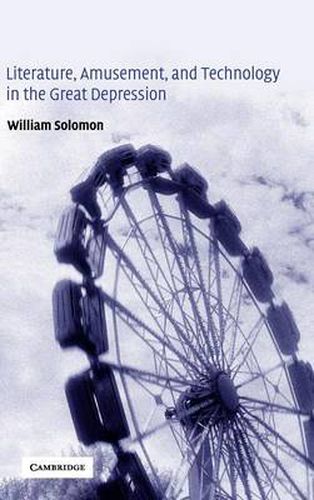Readings Newsletter
Become a Readings Member to make your shopping experience even easier.
Sign in or sign up for free!
You’re not far away from qualifying for FREE standard shipping within Australia
You’ve qualified for FREE standard shipping within Australia
The cart is loading…






Literature, Amusement and Technology examines the exchange between literature and recreational practices in 1930s America. William Solomon argues that autobiographical writers like Edward Dahlberg and Henry Miller took aesthetic inspiration from urban manifestations of the carnival spirit: Coney Island amusement parks, burlesque, vaudeville, and the dime museum display of human oddities. More broadly, he demonstrates that the literary projects of the period pivoted around images of grotesquely disfigured bodies which appeared as part of this recreational culture. Figures of corporeal fragmentation also proved important to novelists such as Nathanael West and John Dos Passos who were concerned to resist the ideological force of spectacular forms of mass entertainment like the World’s Fairs, Hollywood film and military ceremonies. Psychic, social, aesthetic and political tensions were thus managed in Depression-era American literature in relation to communal modes of play. This study will appeal to scholars of twentieth-century American literature and culture.
$9.00 standard shipping within Australia
FREE standard shipping within Australia for orders over $100.00
Express & International shipping calculated at checkout
Literature, Amusement and Technology examines the exchange between literature and recreational practices in 1930s America. William Solomon argues that autobiographical writers like Edward Dahlberg and Henry Miller took aesthetic inspiration from urban manifestations of the carnival spirit: Coney Island amusement parks, burlesque, vaudeville, and the dime museum display of human oddities. More broadly, he demonstrates that the literary projects of the period pivoted around images of grotesquely disfigured bodies which appeared as part of this recreational culture. Figures of corporeal fragmentation also proved important to novelists such as Nathanael West and John Dos Passos who were concerned to resist the ideological force of spectacular forms of mass entertainment like the World’s Fairs, Hollywood film and military ceremonies. Psychic, social, aesthetic and political tensions were thus managed in Depression-era American literature in relation to communal modes of play. This study will appeal to scholars of twentieth-century American literature and culture.